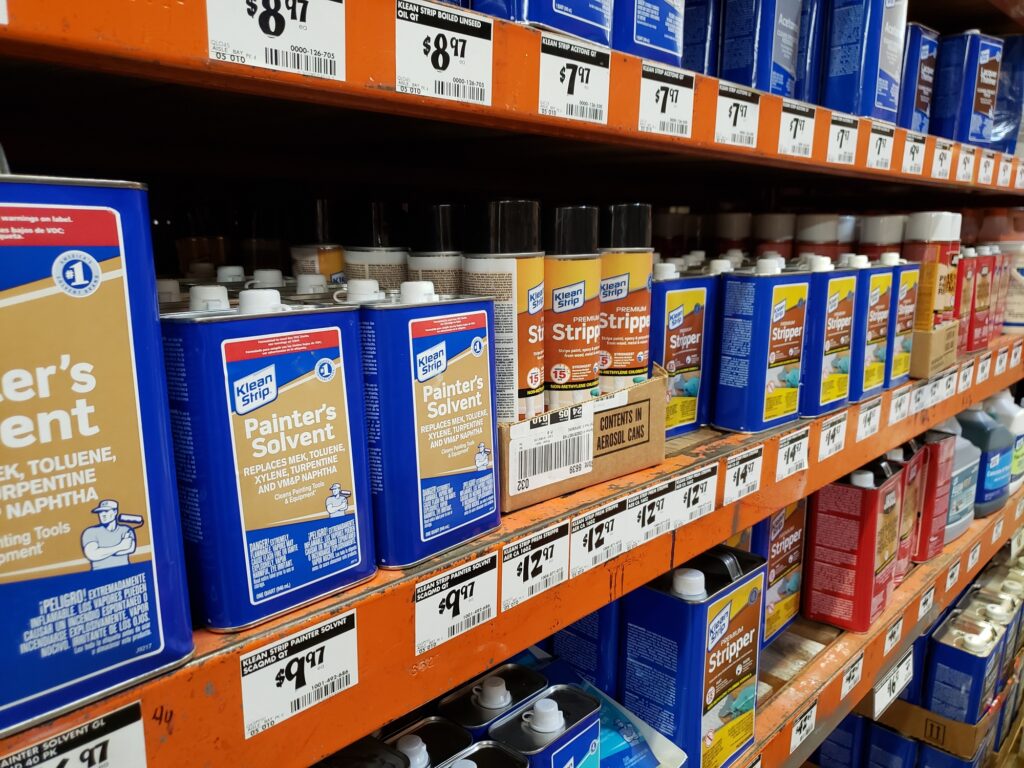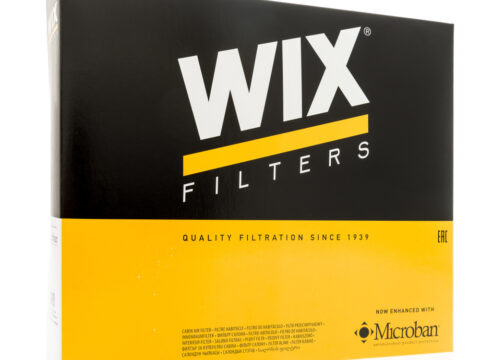Do you have a clogged catalytic converter you wish to clean to restore your vehicle’s efficiency? In such a situation, you may add lacquer cleaner to your gas tank; the fluid helps clean the exhaust system.

While you could add lacquer thinner to your gas tank to unclog your catalytic converter, the fluid contains corrosive material that causes significant harm to your fuel system.
It could melt the system’s components and compromise your road safety.
Let’s explore more on the topic.
Contents
What Is Lacquer Thinner?
Lacquer thinner is a solution used to dissolve resins and plastics applied on various surfaces. It contains chemical solvents such as butyl acetate and acetone, which combine to give the fluid its corrosive abilities.
The chemicals contained in lacquer cleaners are highly flammable and emit harmful fumes. Therefore, hanging it around your house is not advisable due to various safety risks.
The solutions’ primary use is ridding surfaces of lacquer paints. These paints contain solid solvent binders that dry by simple solvent evaporation, forming a solid layer. Lacquer thinner dissolves and gets rid of the paint.
Can You Put Lacquer Thinner in Your Gas Tank to Clean Your Catalytic Converter?
The short answer is yes. Adding lacquer thinner to your gas tank could clean your catalytic converter and eliminate any substance clogging the exhaust system component.
However, you need to follow the appropriate steps.
A clogged catalytic converter is a nuisance that considerably interferes with your vehicle’s efficiency. It interferes with your engine’s performance, reduces your car’s acceleration, and causes the emission of dark exhaust smoke or a rotten egg smell from your exhaust system.
A blinking engine light usually indicates these problems on your dashboard.
Using a lacquer thinner to unclog your catalytic converter is quite simple. All you need to do is add the solution to a half-full gas tank.
Then, drive the car around until the fuel tank almost depletes, and the impurities clogging your catalytic converter will be cleaned off.
Your vehicle’s engine will restore efficiency, and the adverse symptoms and annoying engine lights will disappear. You may also notice that your exhaust system is no longer noisy like before.

What Happens If You Put Lacquer Thinner in a Gas Tank?
Blindly putting lacquer thinner in your gas tank is a serious risk that has considerable repercussions for your vehicle. It could damage your engine and deteriorate your gas tank’s interior.
Modern cars have various rubber and plastic components in their engines and fuel systems. Since lacquer is a highly corrosive solution, it is likely to damage these components. For instance, the gasoline pump, wiring in the tank, and fuel filter will succumb to corrosion.
The lacquer thinner may also melt the components’ glue, causing the components to be loose.
Similarly, being a flammable liquid, lacquer thinner is a severe fire hazard in your gas tank. The rising temperatures from your running engine may ignite the solution and burn your exhaust valves.
Therefore, putting lacquer thinner in your gas tank results in a smoky exhaust and a slow engine. In the long run, residues of the solution in your gas tank could pollute your fuel, damage your engine, and compromise its performance.
However, if you have a clogged catalytic converter, adding lacquer thinner to a half-full gas tank is an effective way of cleaning the exhaust system.
With the right amount of solution, the system will regain its efficiency without sustaining any damage to your engine and fuel system.
How Much Lacquer Thinner Should You Put in Your Gas Tank?
When cleaning your catalytic converter without removing the exhaust system component, adding the right amount of lacquer thinner to your gas tank is essential. Insufficient amounts of the solution will not be adequate, while corpus amounts could damage your vehicle.
As such, you may wonder how much lacquer thinner you should add to your gas tank.
To ensure your catalytic converter is unclogged effectively without adverse effects on your car components, it is advisable to add 2 liters or half a gallon of lacquer thinner to a half-full gas tank.
However, too much thinner will reduce the gasoline quality in your gas tank and potentially damage your gas tank and other components. So, be careful with the amount you add to the gas tank.
Similarly, ensuring your gas tank is half full before adding thinner is essential. Remember, lacquer thinner is a highly corrosive and flammable solution.
Thus, filling an empty gas tank with thinner could significantly damage your engine and other essential components instead of remedying the clogged catalytic converter as envisioned.
Lacquer Thinner Uses
Lacquer thinners are a solution of strong chemical solvents, with their usefulness extending to various functions. Here are some of the solution’s uses:
Use 1: Thinning and Dissolving Paint
The solution easily dissolves lacquer-based paints and gives the surfaces a smooth and level finish. You could also use it to clear the paint.
Use 2: Clean Paint Brushes and Rollers
Ridding your paintbrush of any paint residue before embarking on another task is vital. While removing the paint by thoroughly cleaning it with water is not feasible, you can soak the brush in lacquer thinner, and it will look as good as new. Avoid using the solution if you have a nylon brush.
Use 3: Cleaning Auto Parts
Lacquer thinner is used to clean various vehicle components. It effectively cleans off oil and grease spilled on vehicle parts as it quickly dissolves most stains. The solution also effectively cleans clogged catalytic converters.
Use 4: Removes Tar
Once tar spills on a surface, using traditional methods is incredibly difficult to clean. However, lacquer thinner can dissolve tar and prevent it from permanently staining surfaces.
Does Lacquer Thinner Really Clean Catalytic Converters?
If you are experiencing car trouble due to a clogged catalytic converter, using lacquer thinner is an effective way to clean the exhaust system on your own. It is a simple process with astonishingly great results.
Add the lacquer thinner to half full gas tank to yield positive results and rid your catalytic converter of impurities. After driving around for a while, the catalytic converter will eventually unclog itself.
While the solution is generally safe and seldom results in adverse outcomes, some risks accompany its use. Due to its highly corrosive nature, the lacquer thinner could damage your gas tank and engine.
Similarly, a lacquer thinner will not effectively clean your catalytic converter if it is sealed shut. In such circumstances, you must physically clear the blockage, as the solution only removes carbon deposits.
What is a Substitute for Lacquer Thinner?
You can use various lacquer thinner substitutes depending on the situation and what you wish to achieve. However, car owners should be careful when using other substitutes.
Using the wrong substitute for lacquer thinner or using excess amounts could damage your engine or exhaust system.
The most common lacquer thinner substitute is acetone. The two solutions can be used interchangeably in various situations due to their common properties. T
hey are both potent cleaning agents able to clear paint off surfaces. Nonetheless, their common uses are limited to removing paint.
When cleaning your catalytic converter, you can substitute a lacquer thinner with an over-the-counter catalytic converter cleaner such as Cataclean, which is as effective as the solution.
Alternatively, you could remove the converter and clean it yourself by soaking it in soapy water for about twelve hours.














